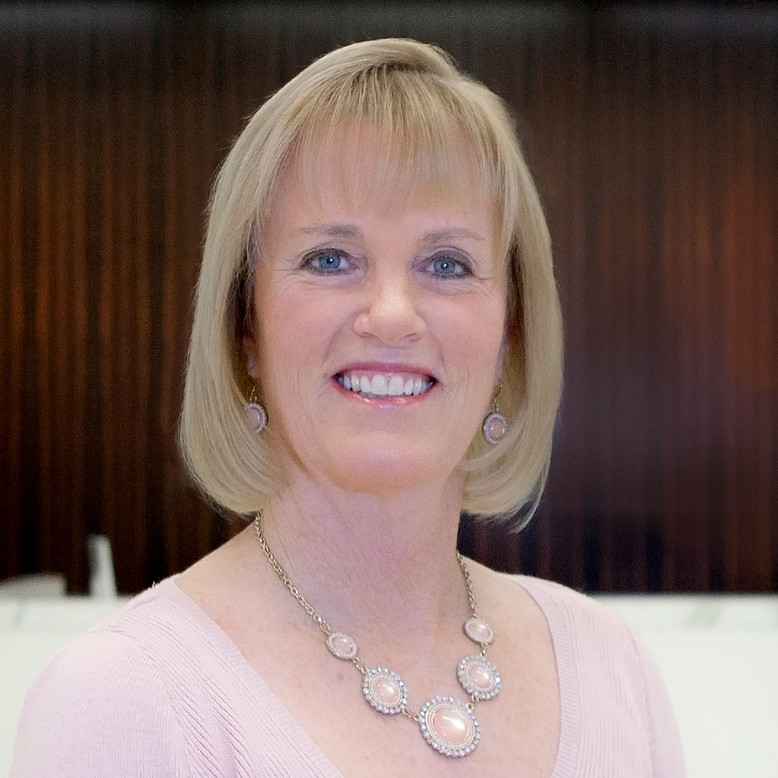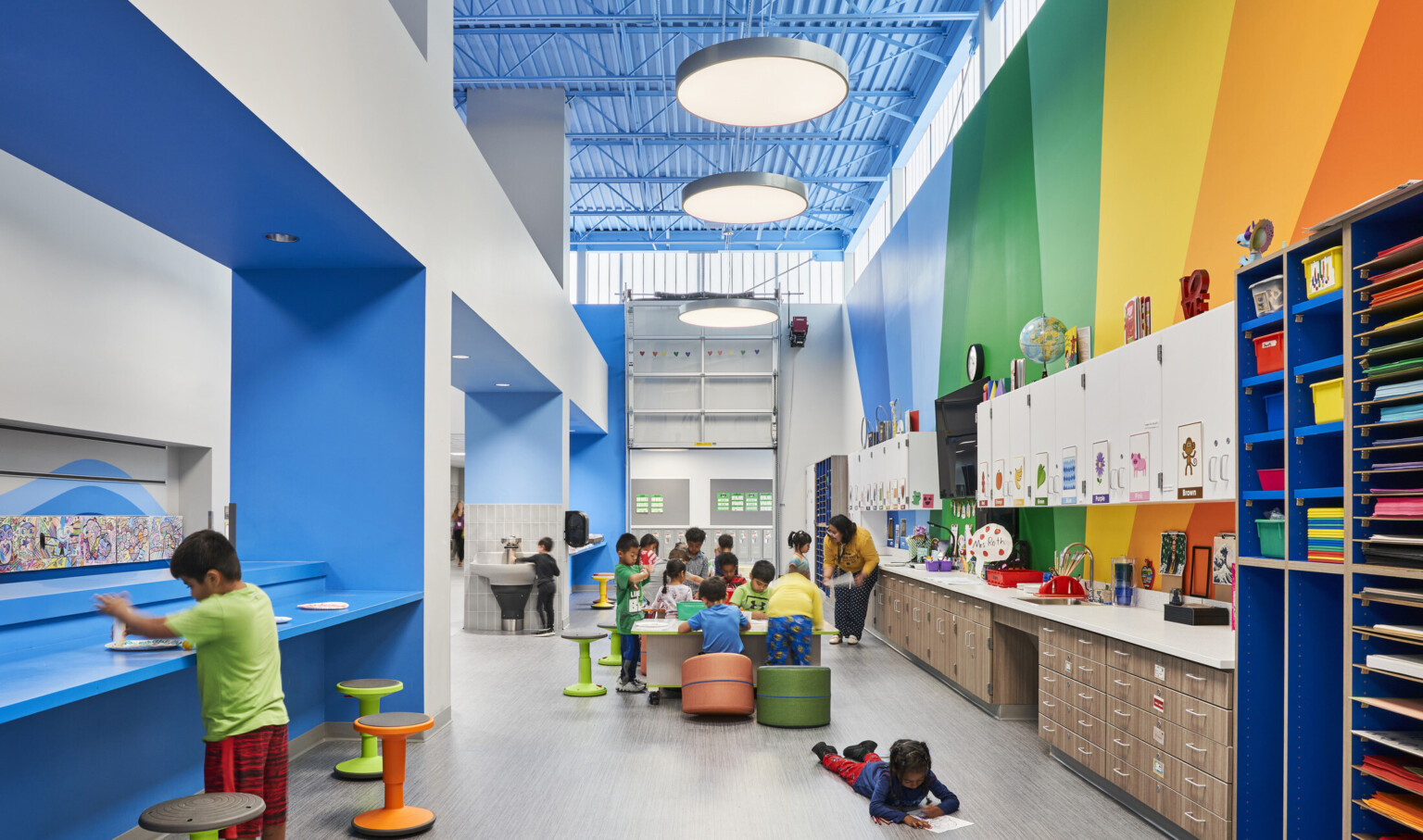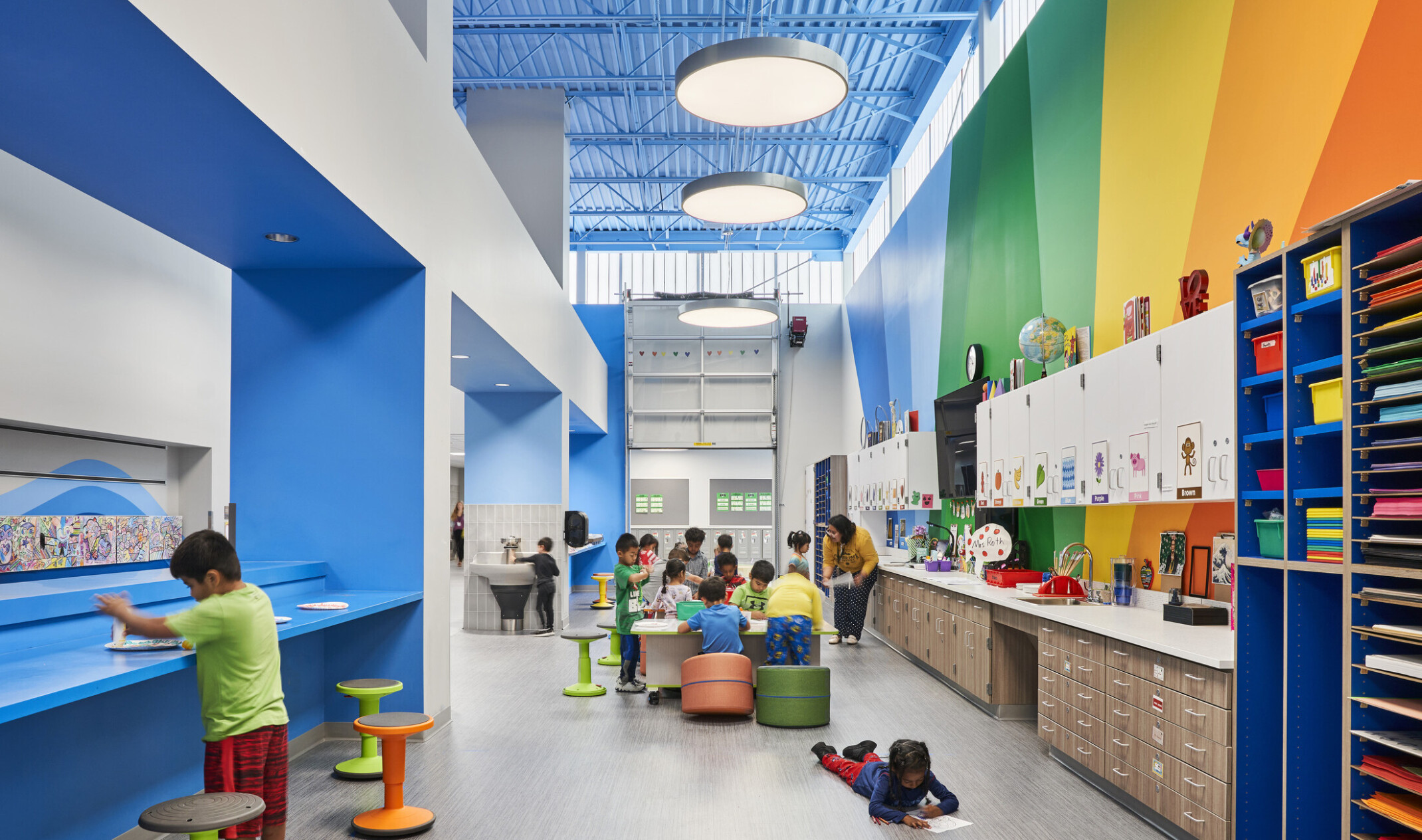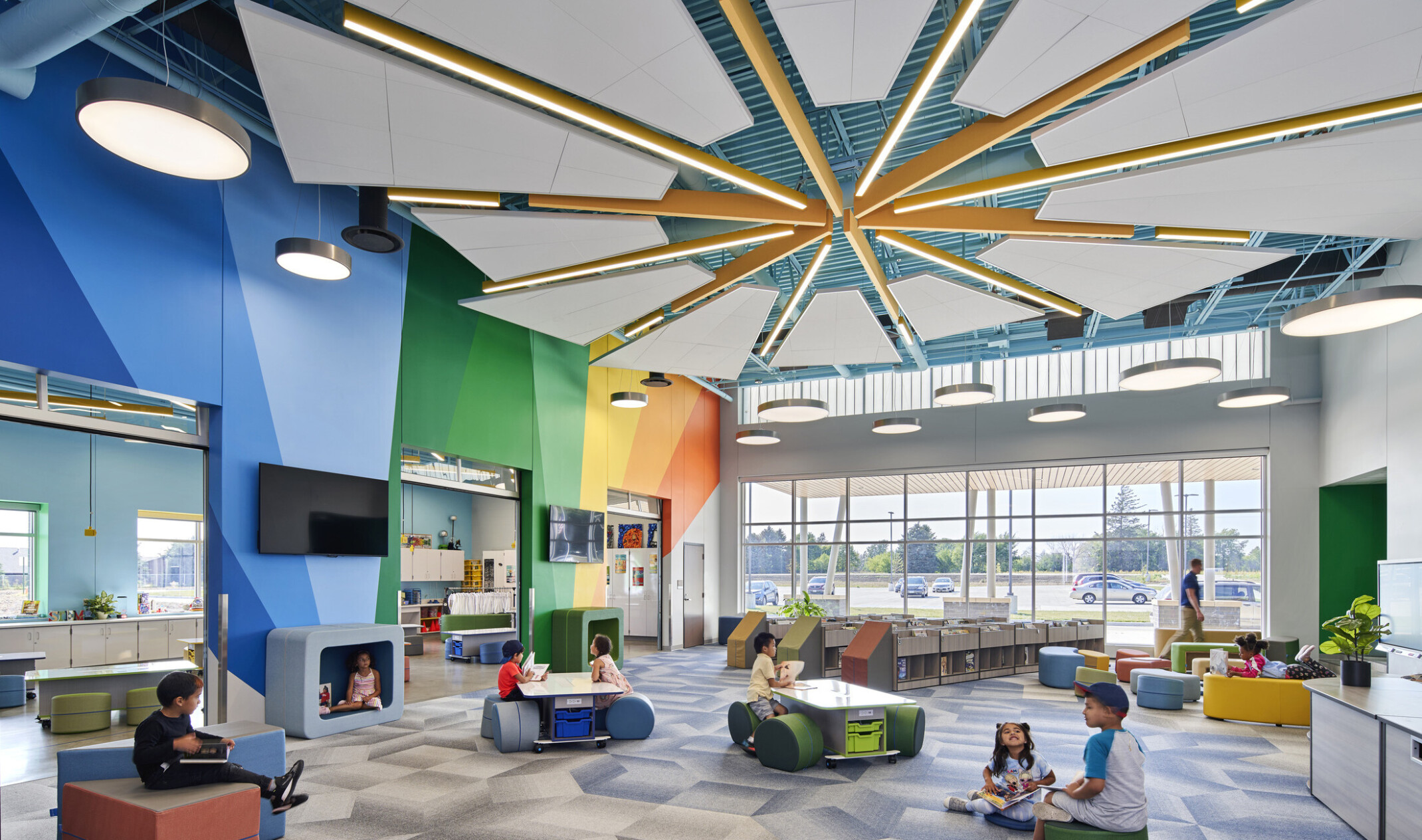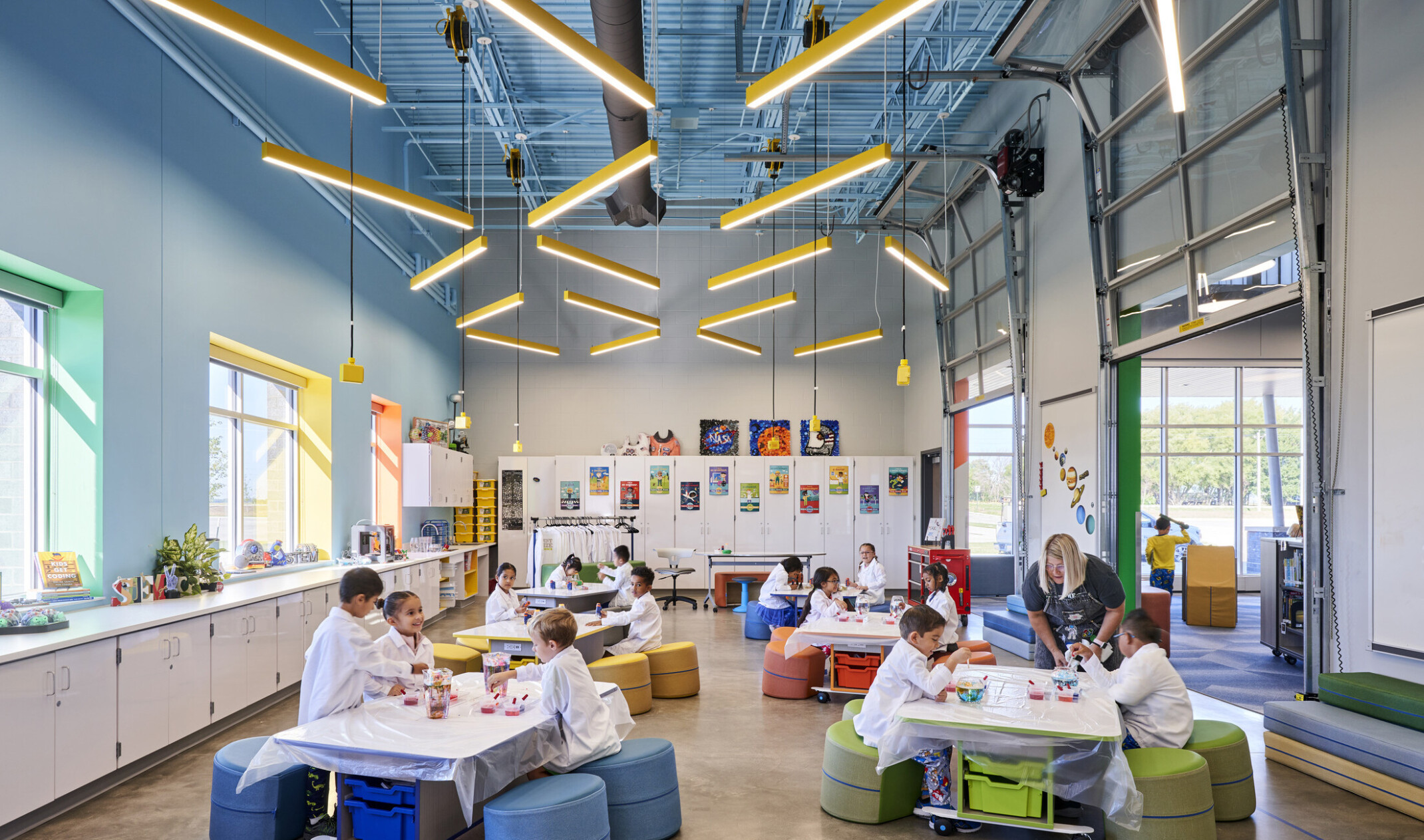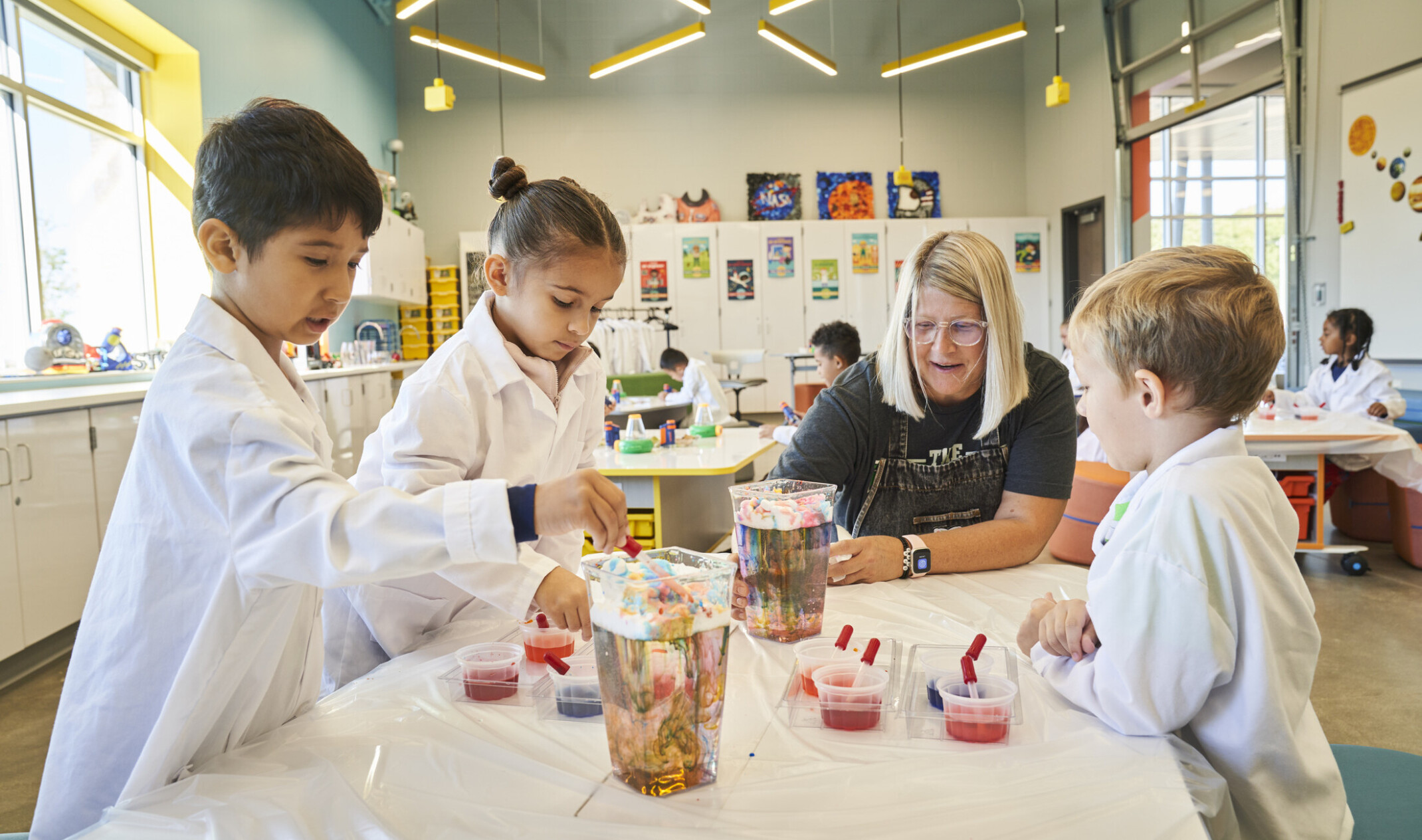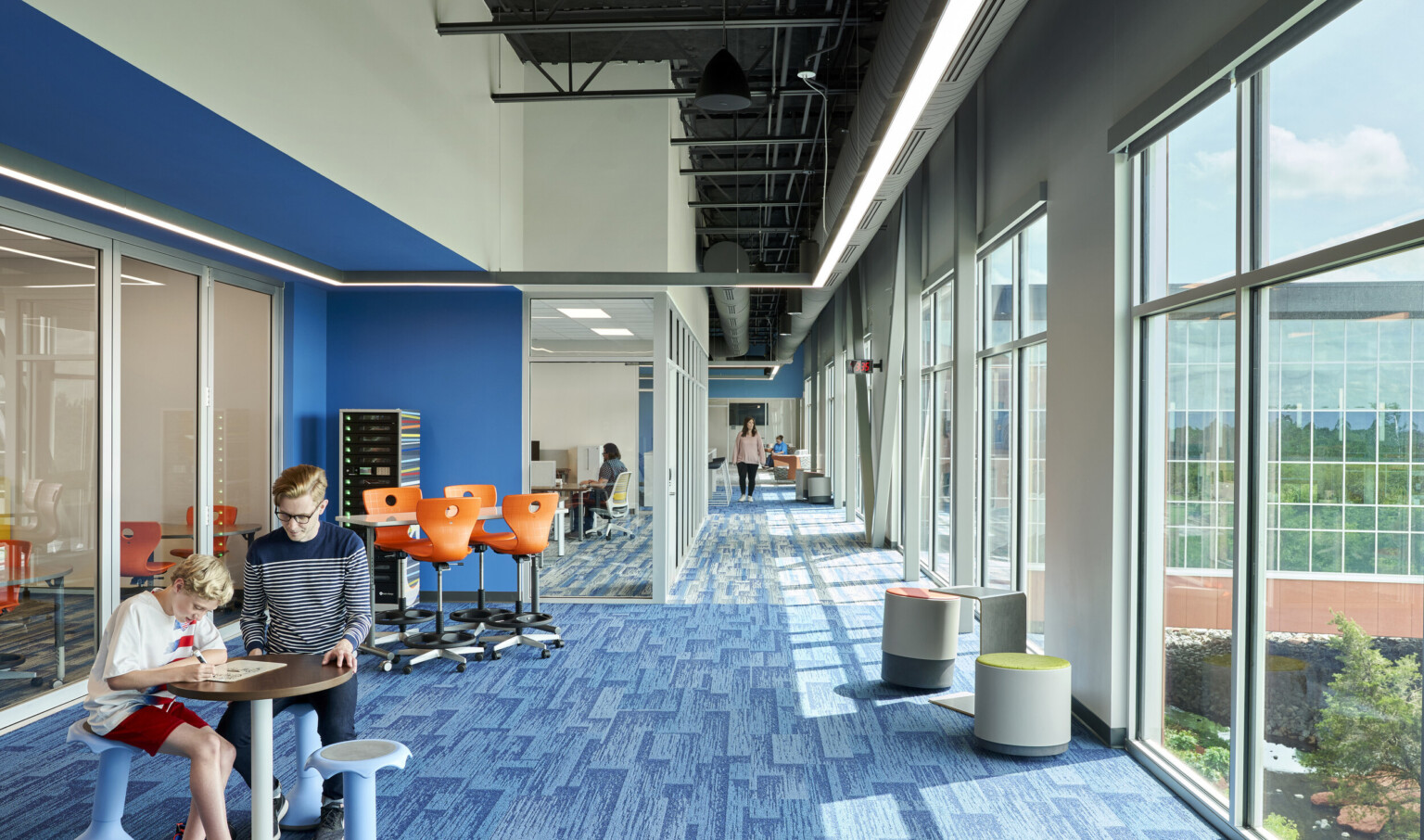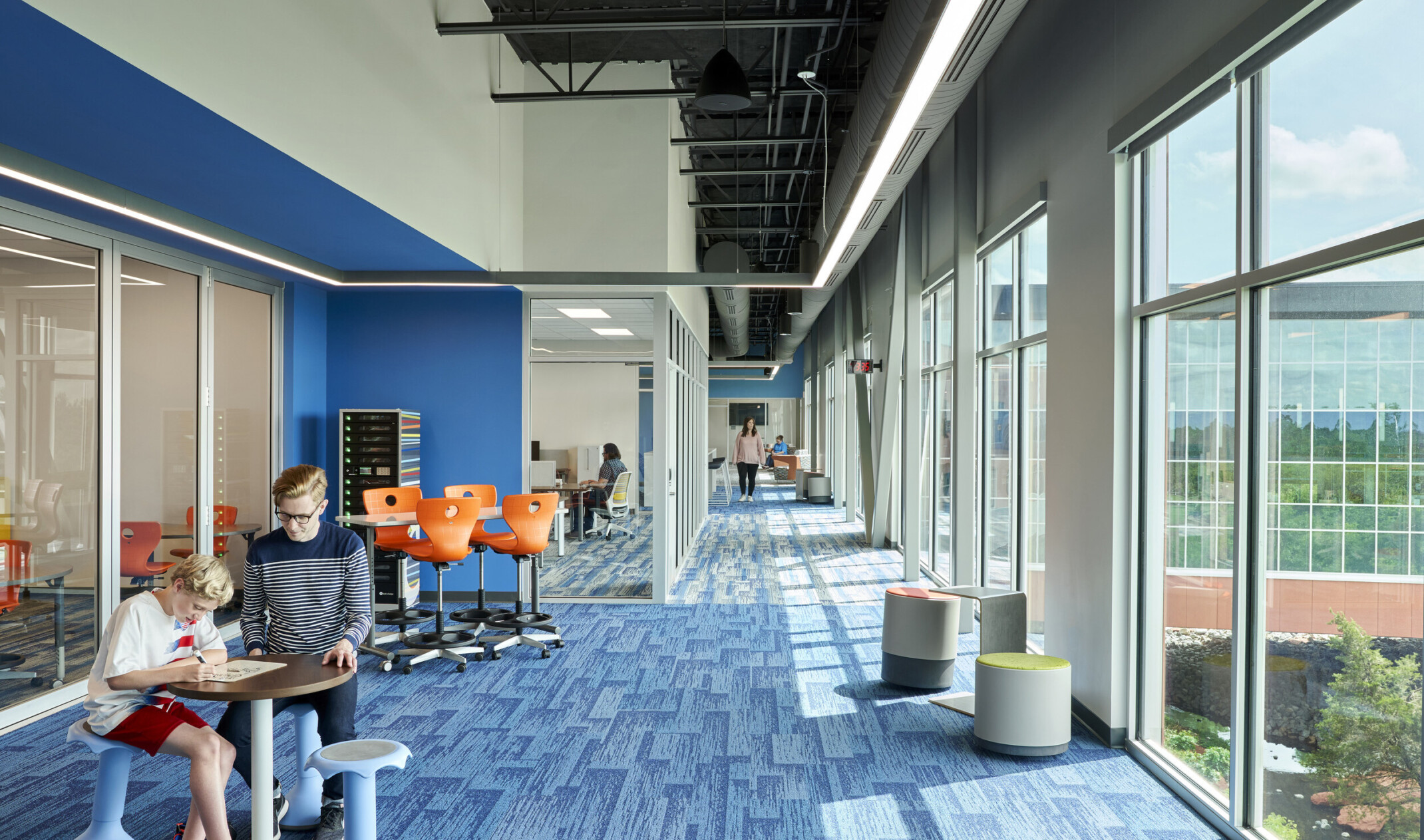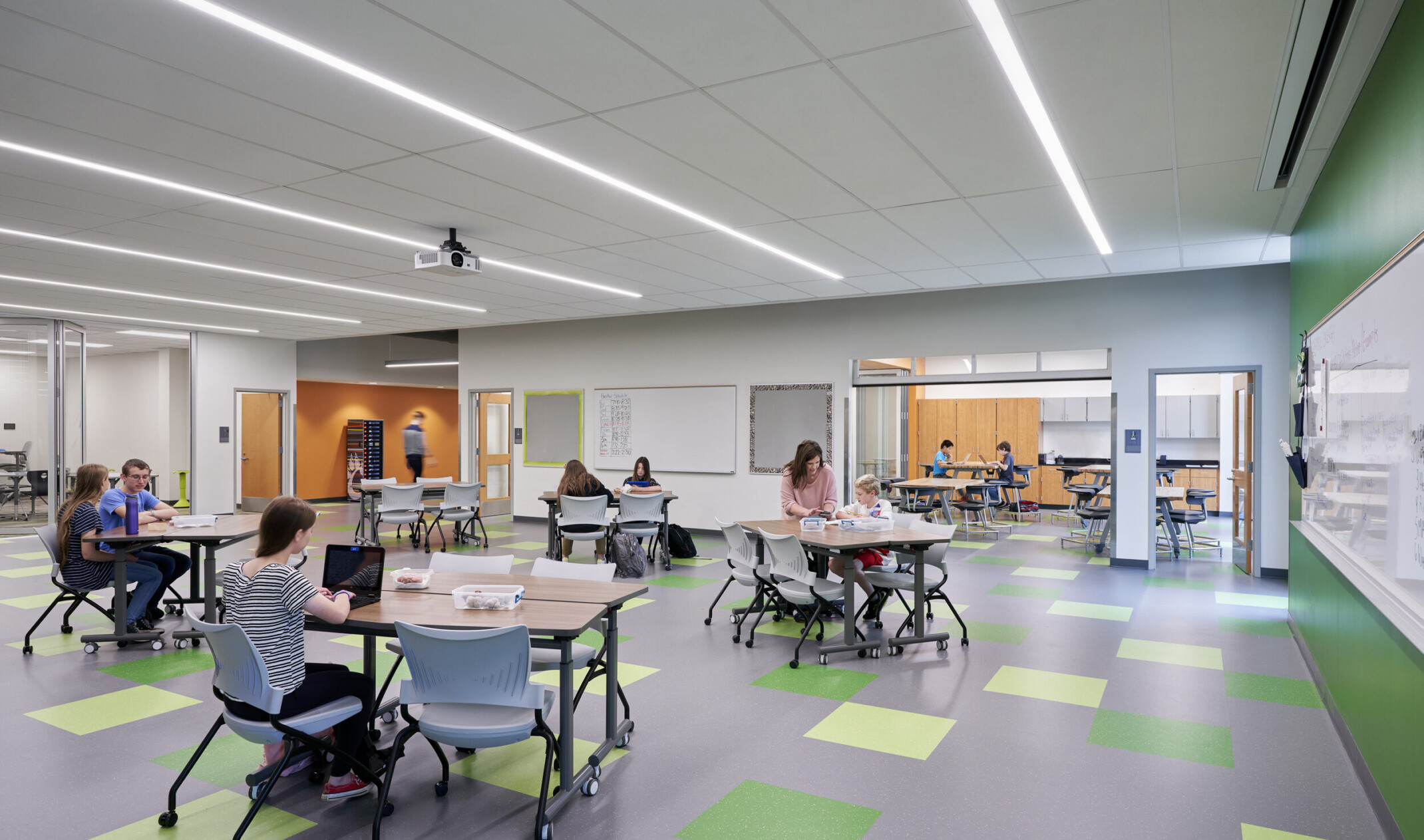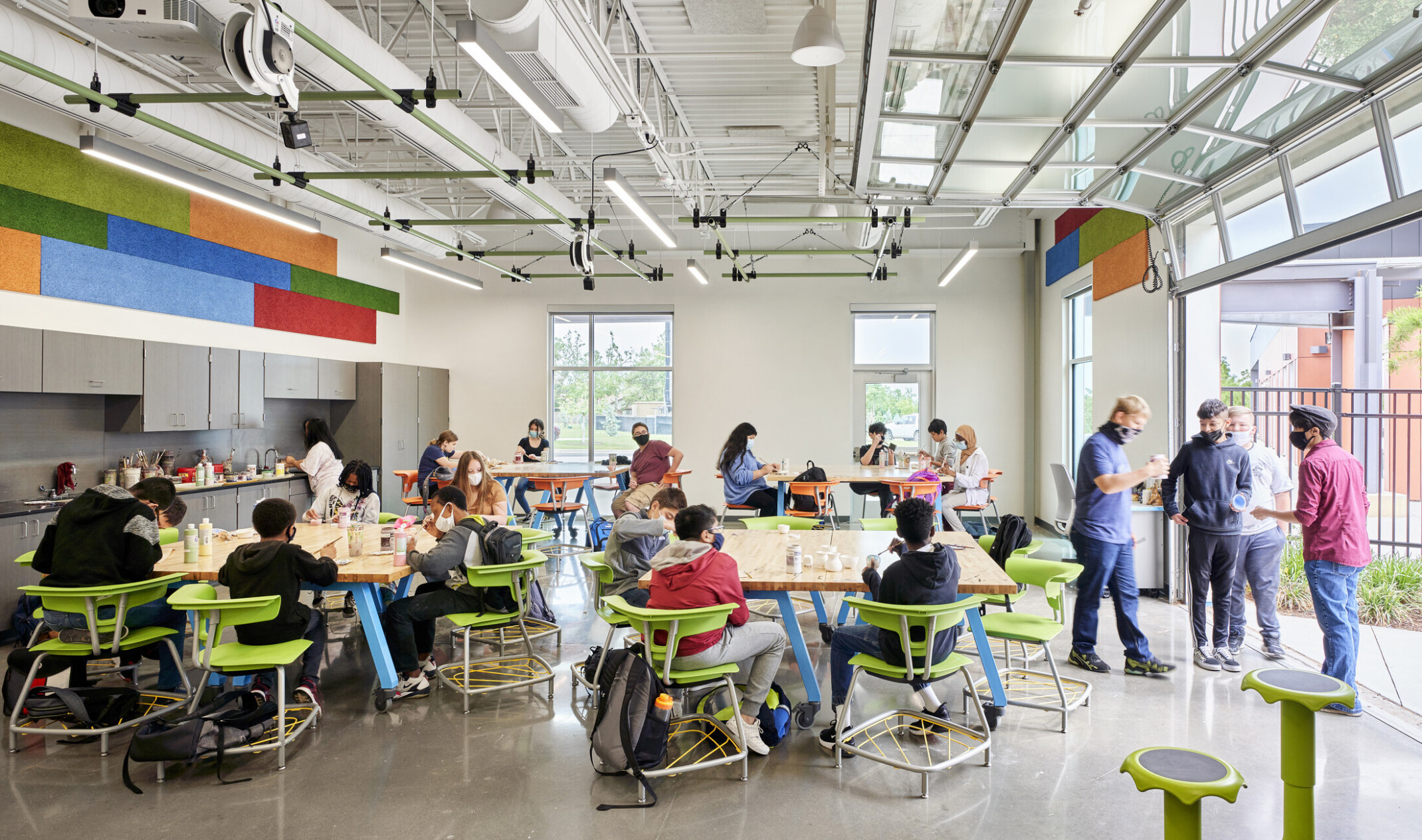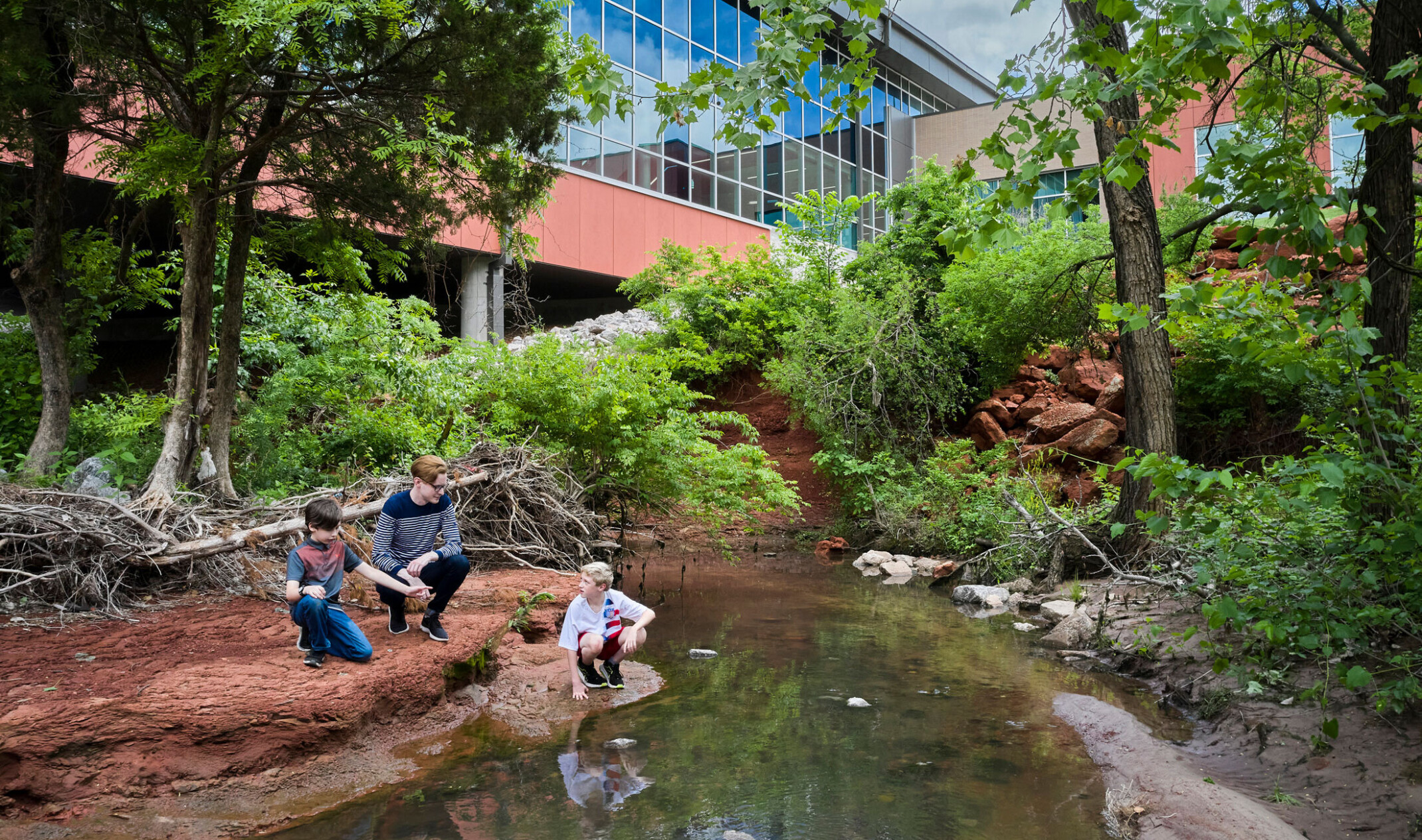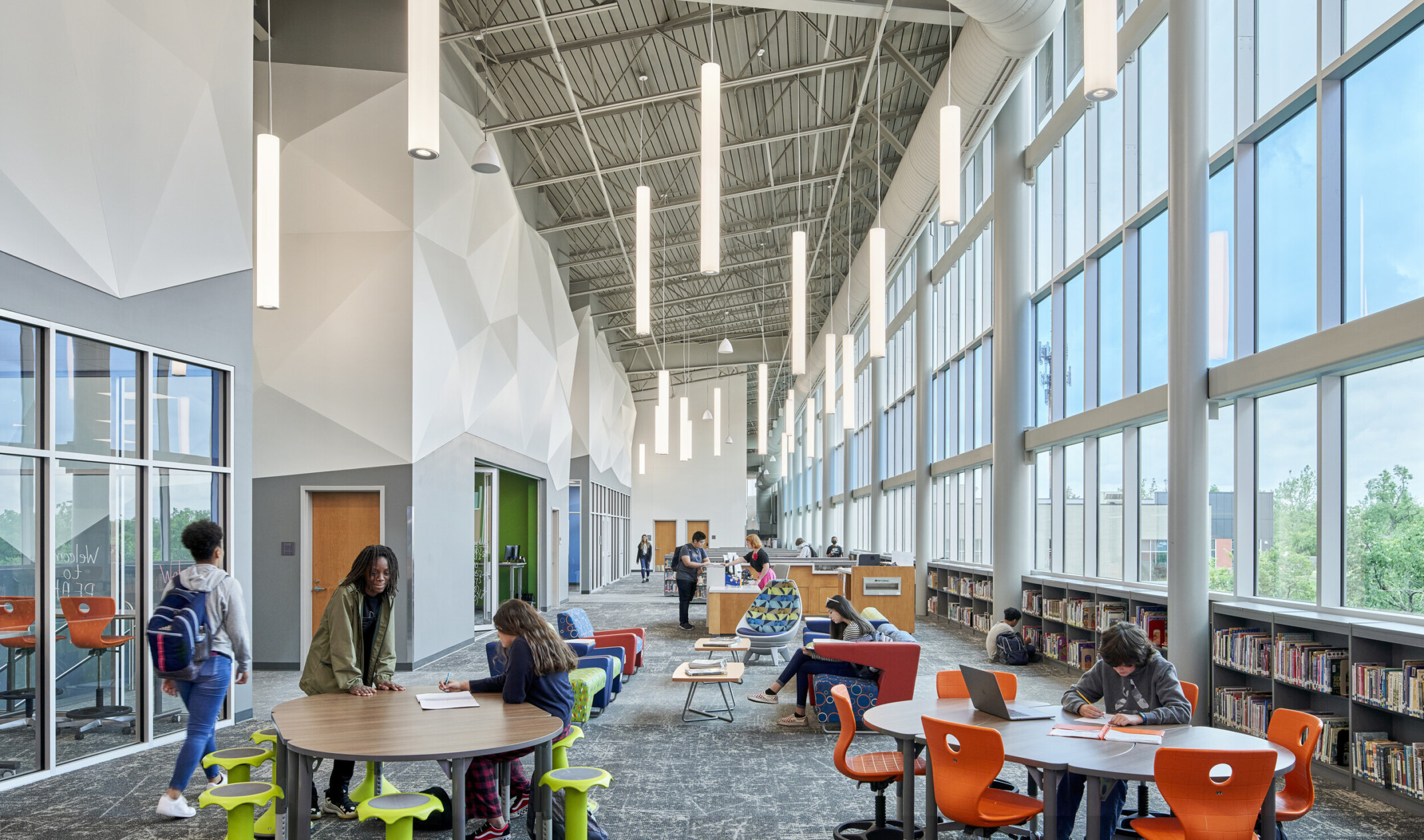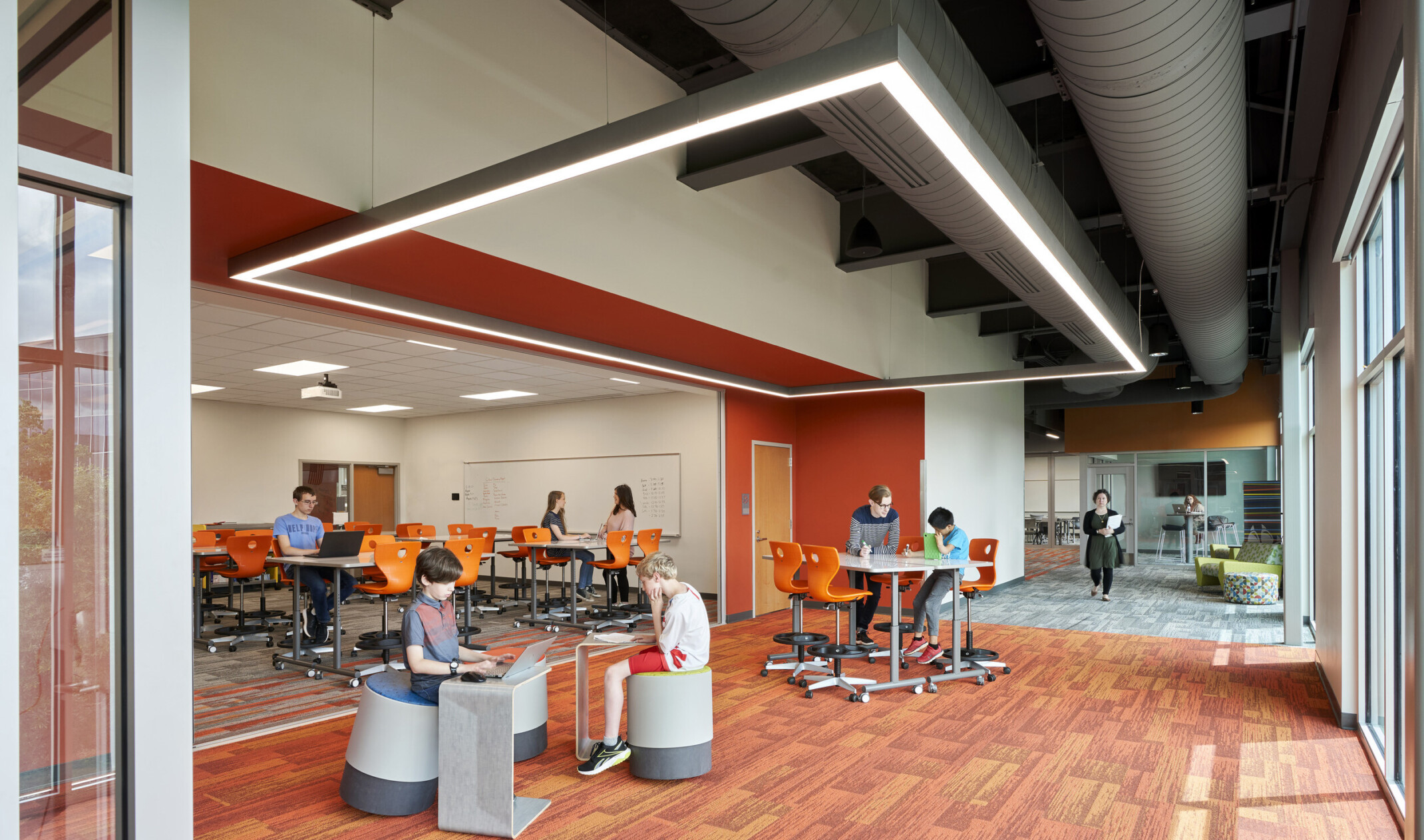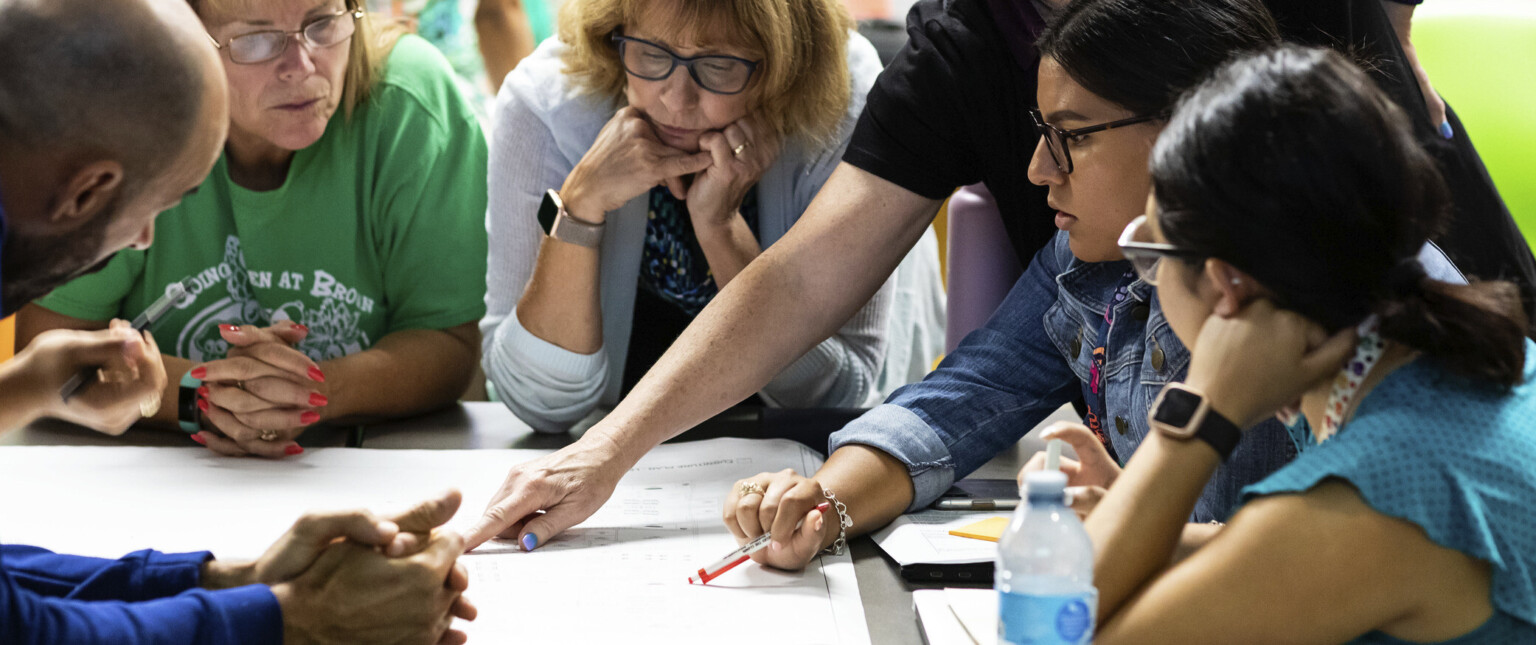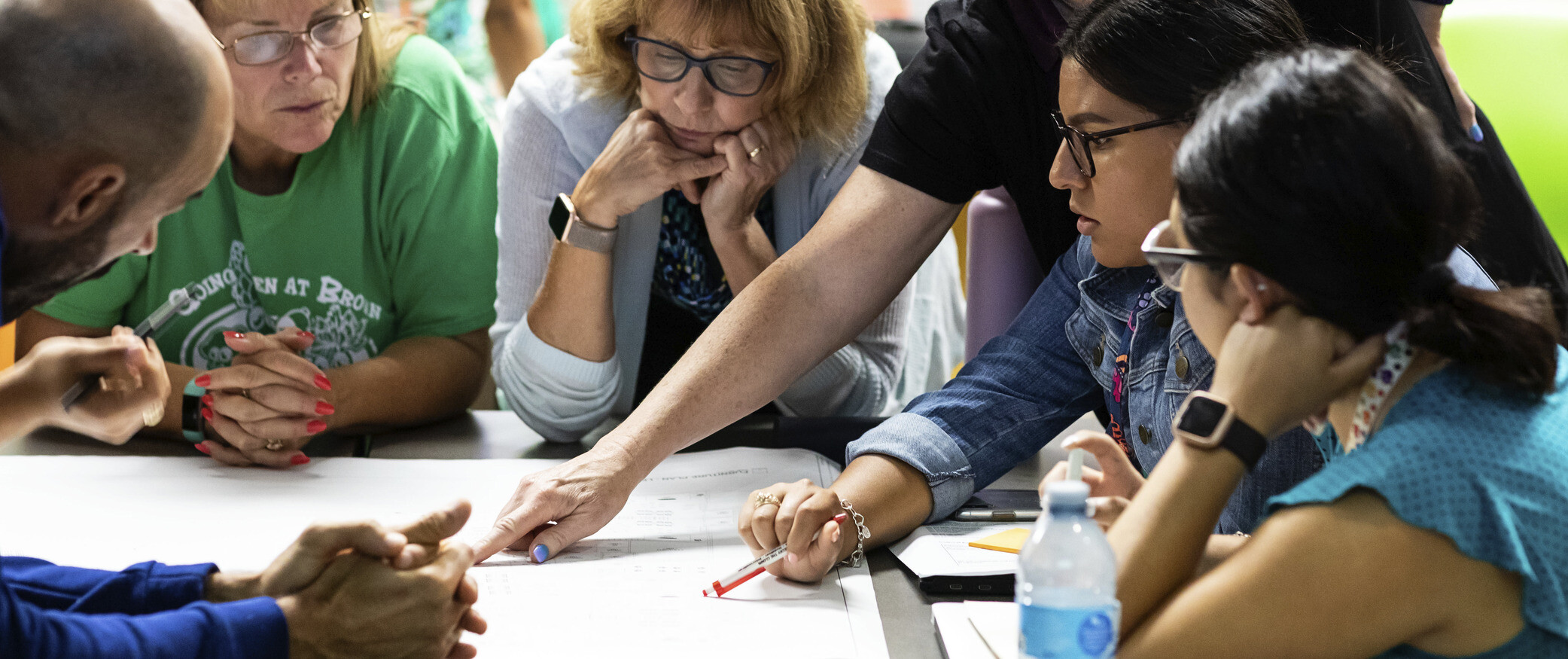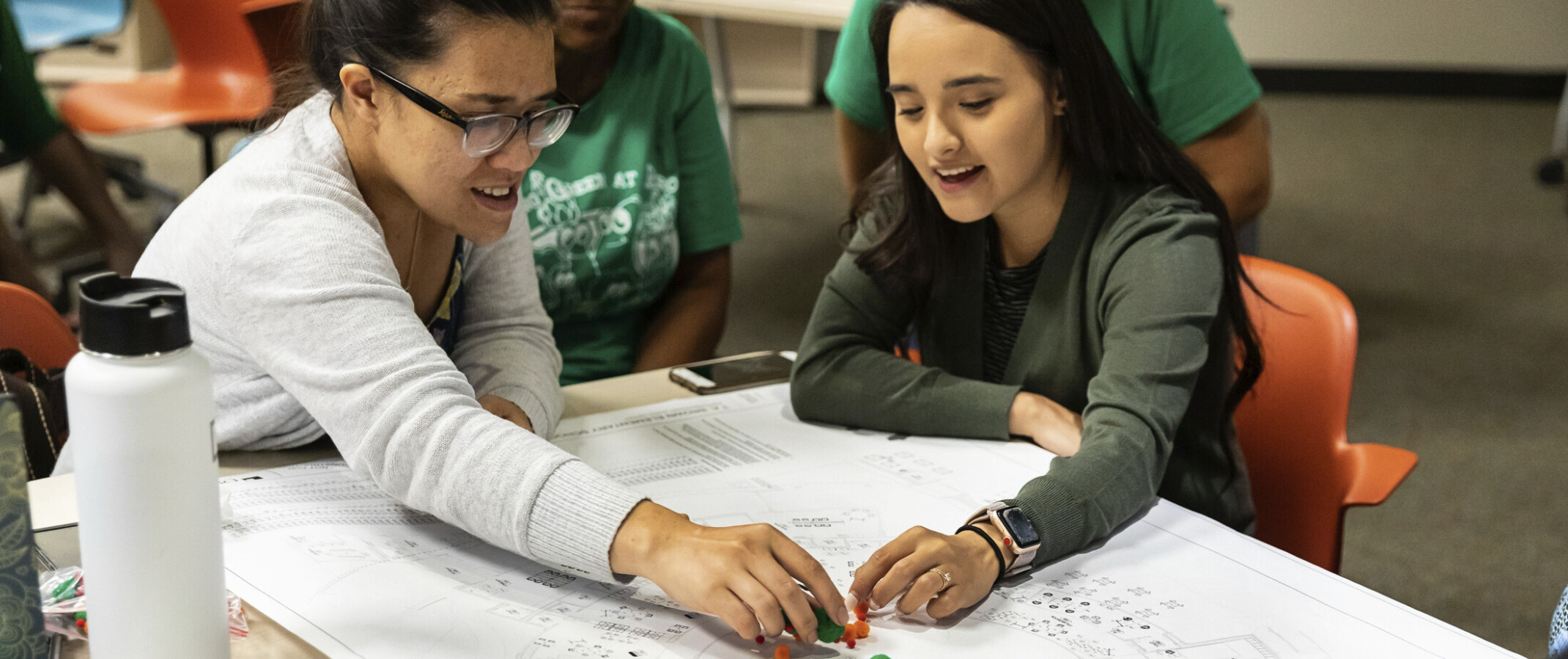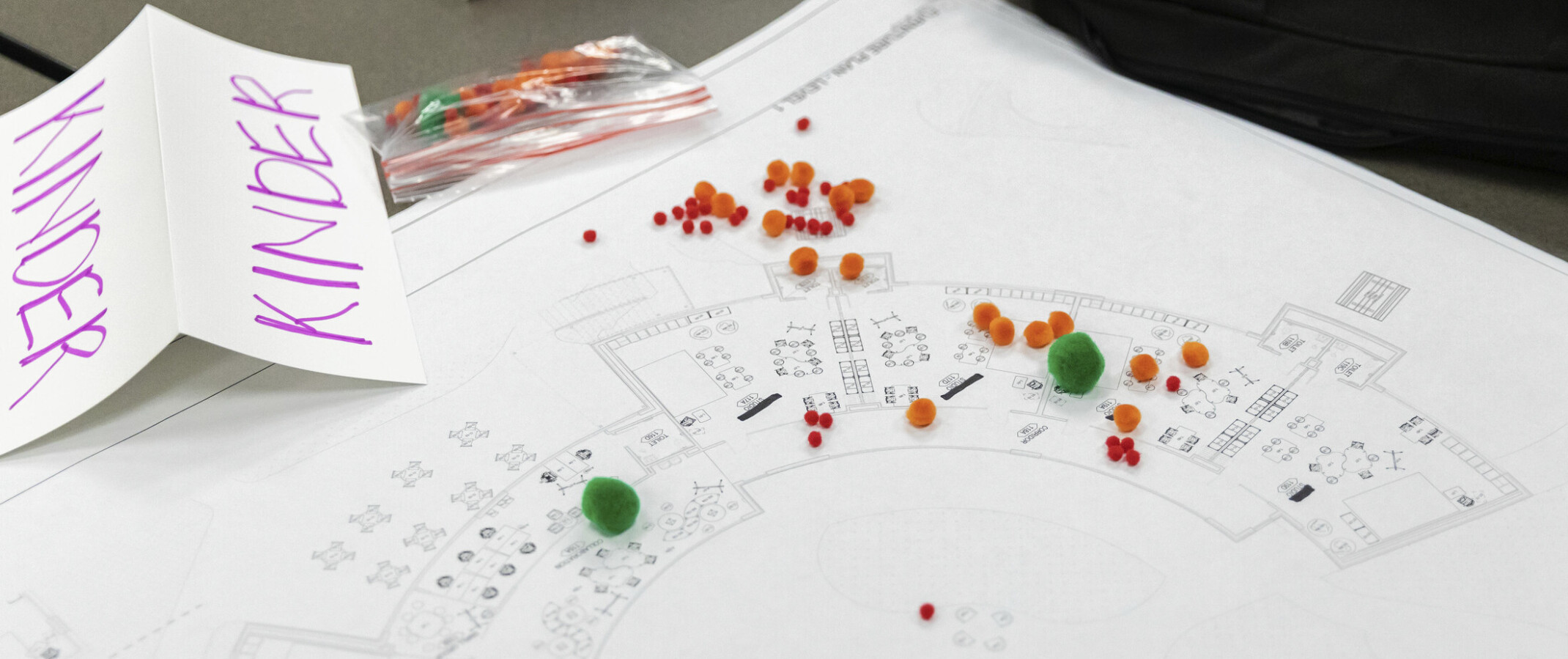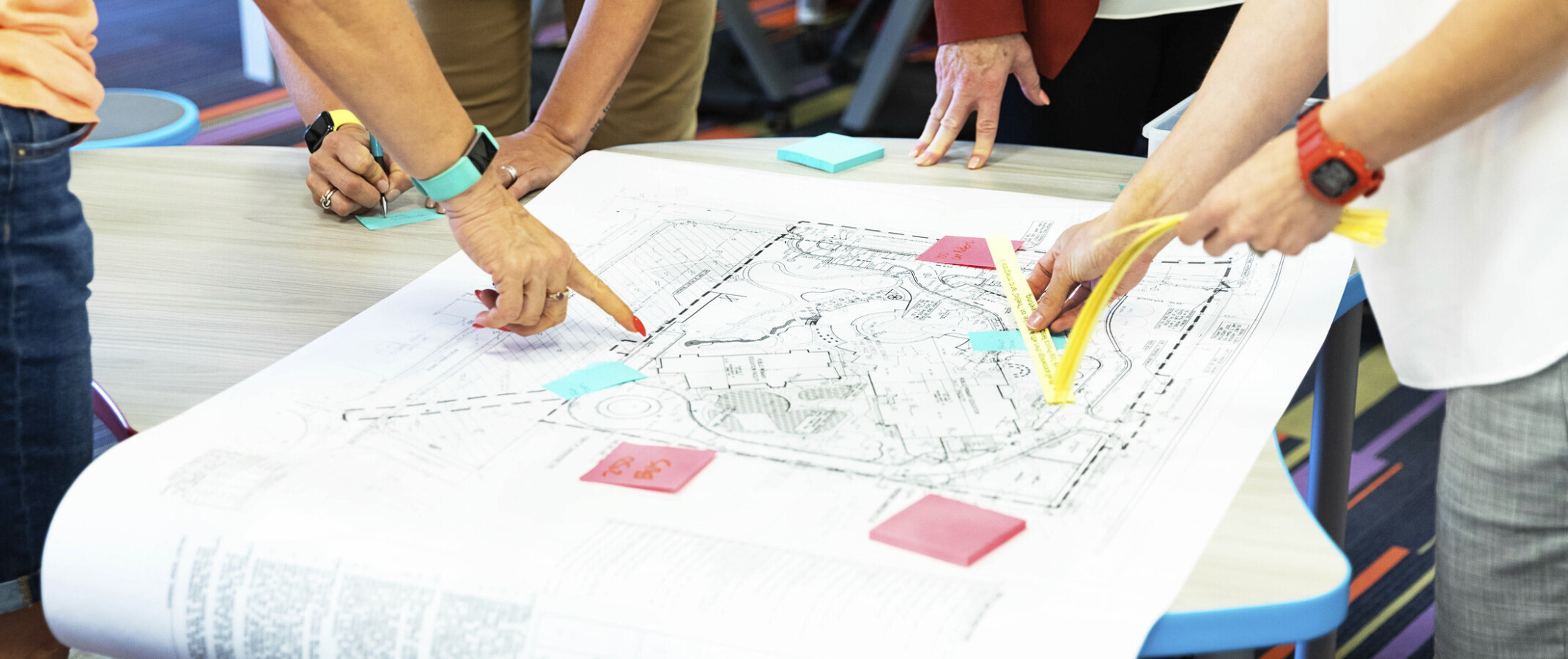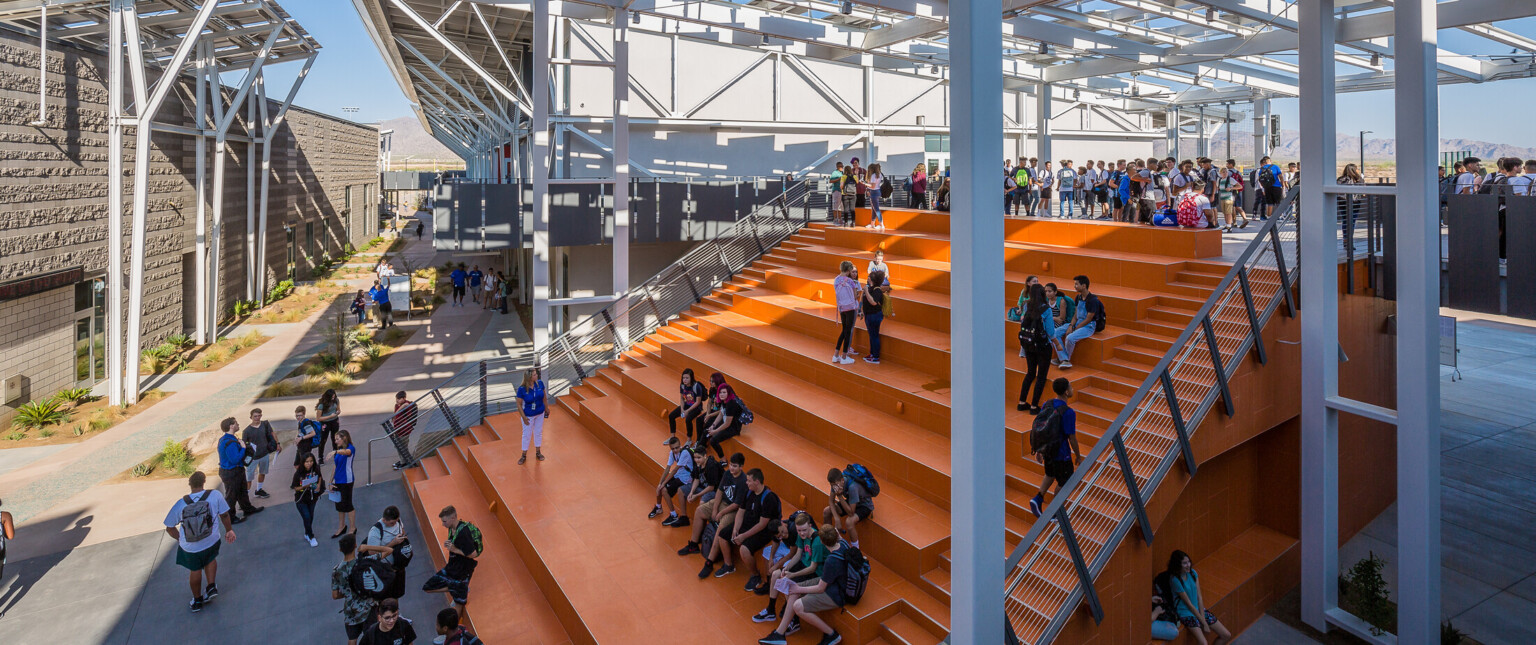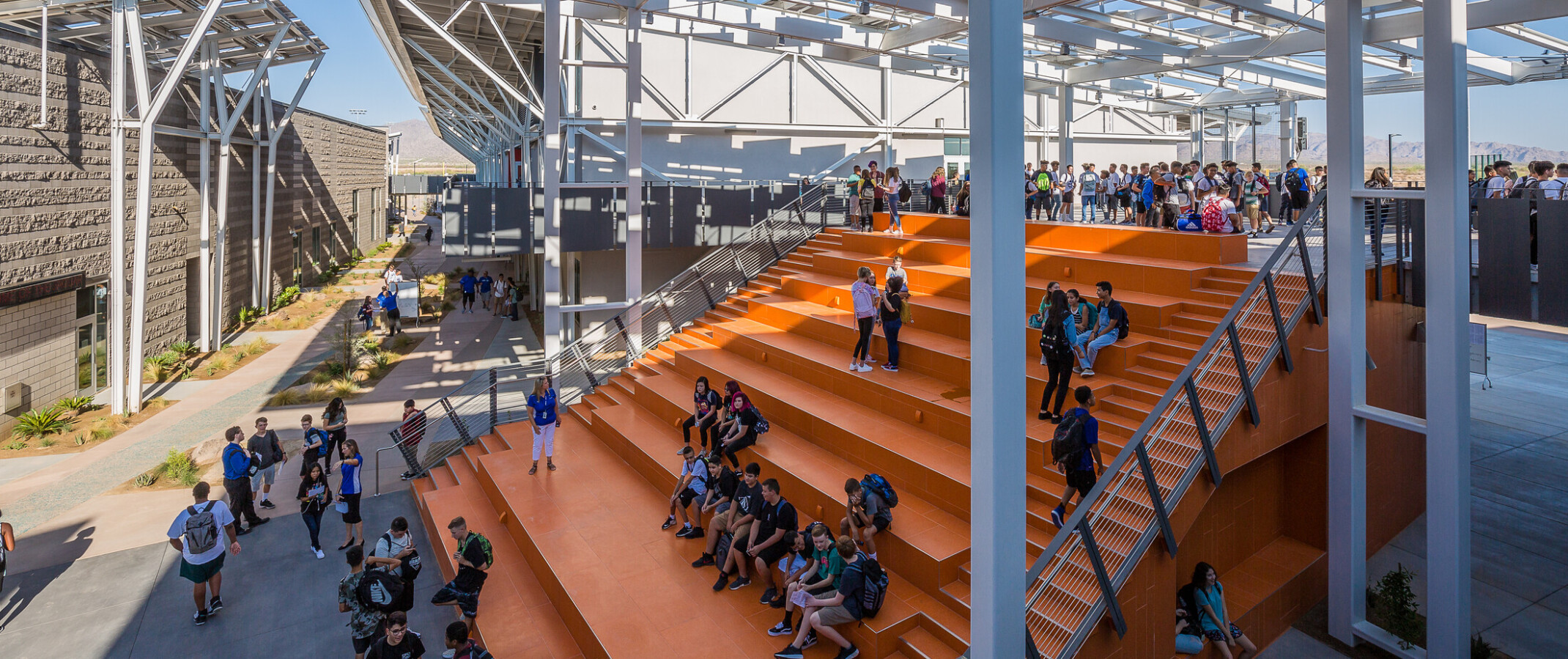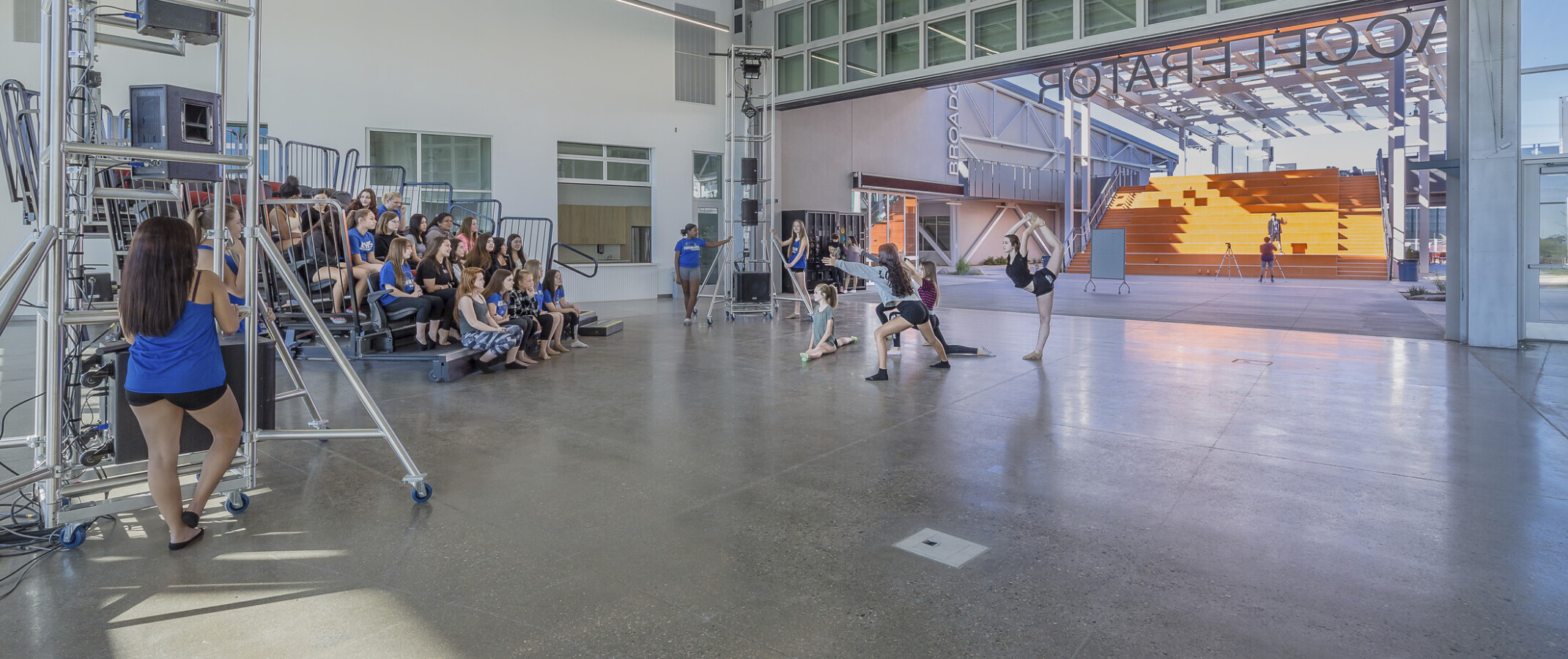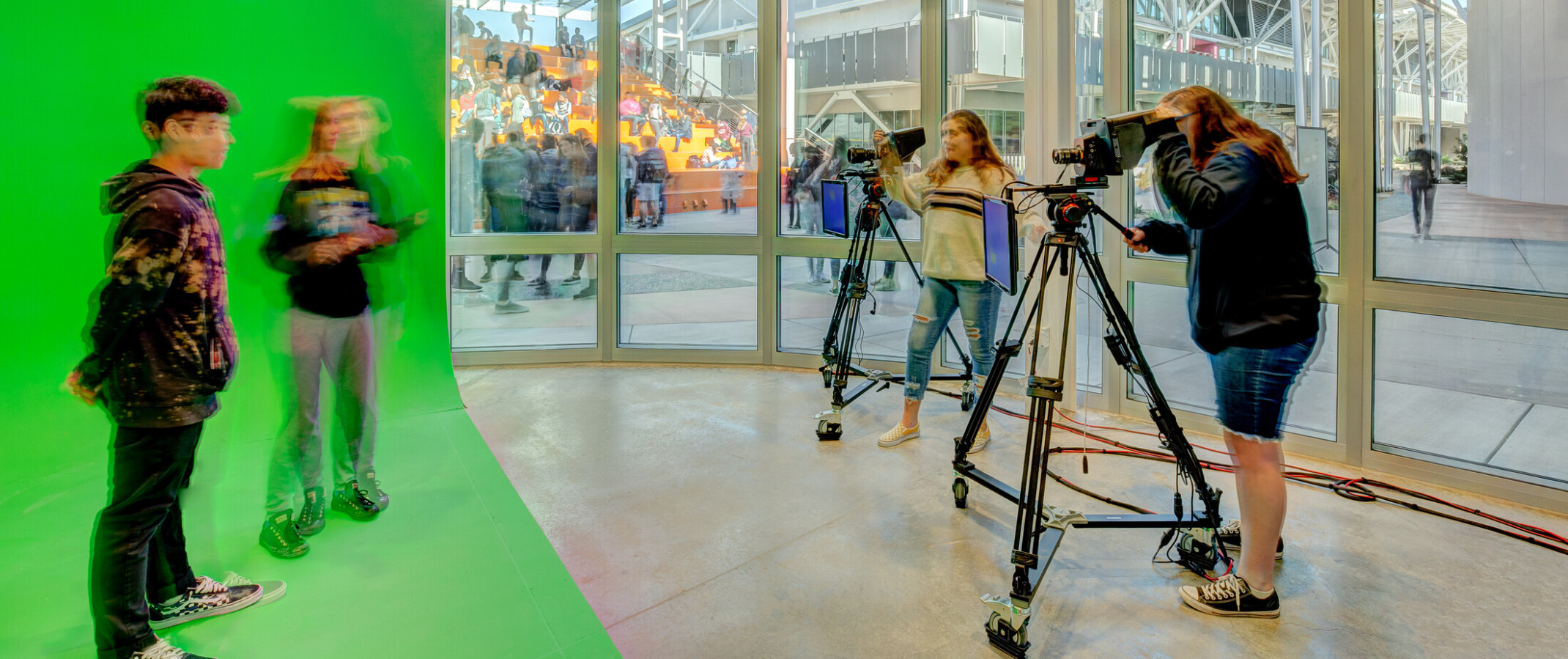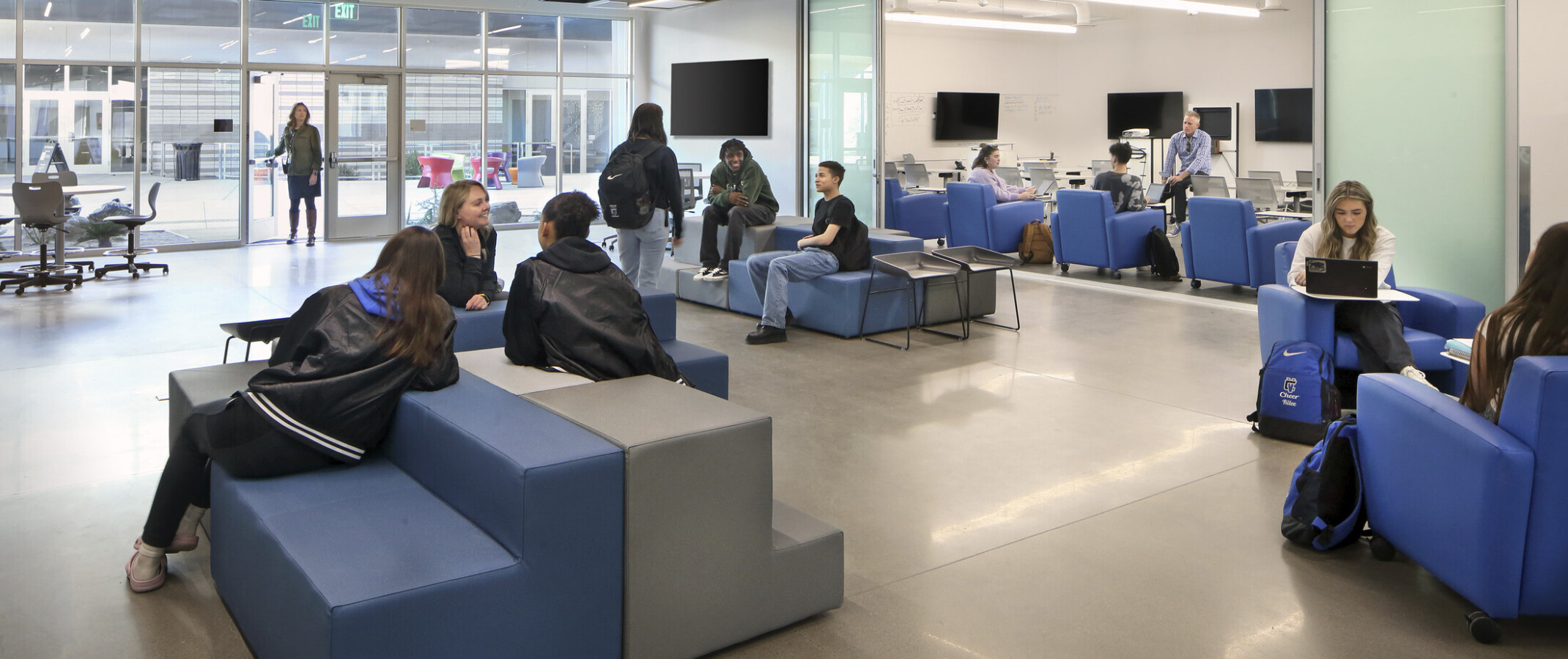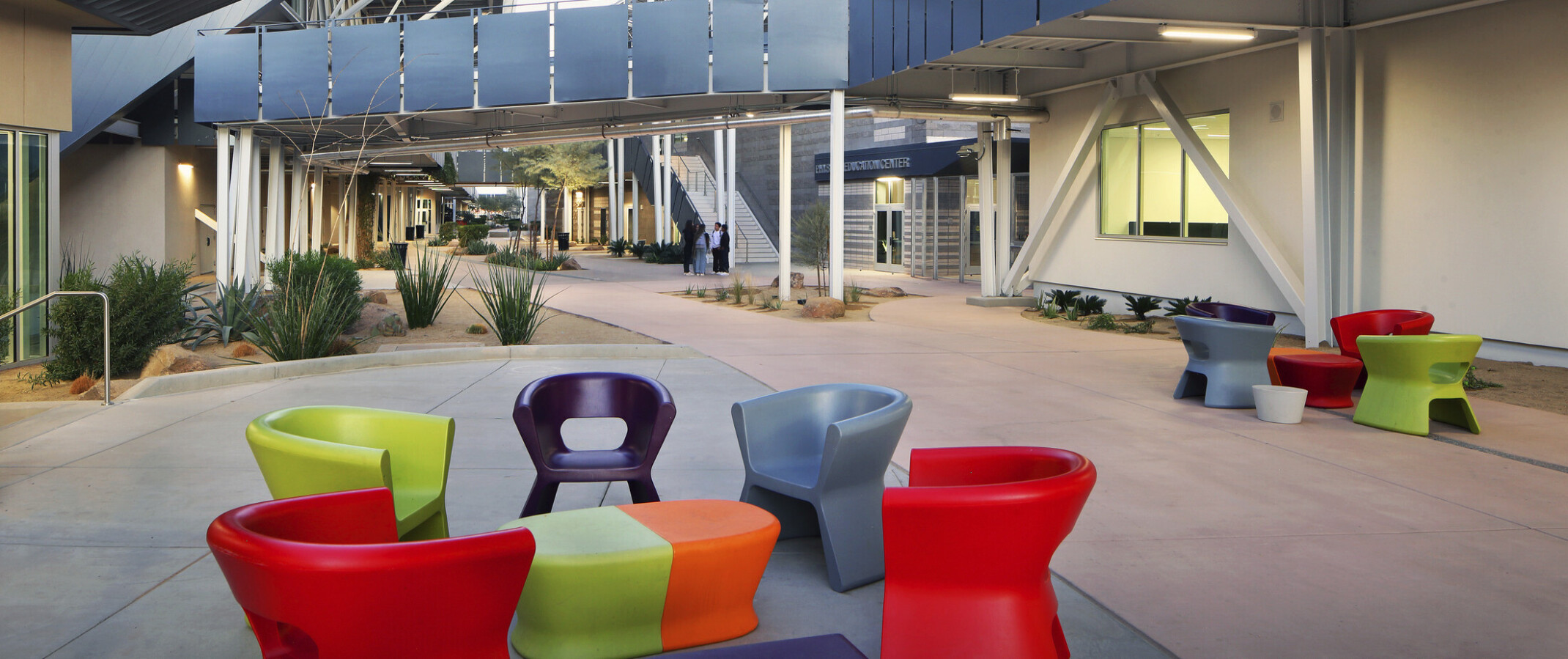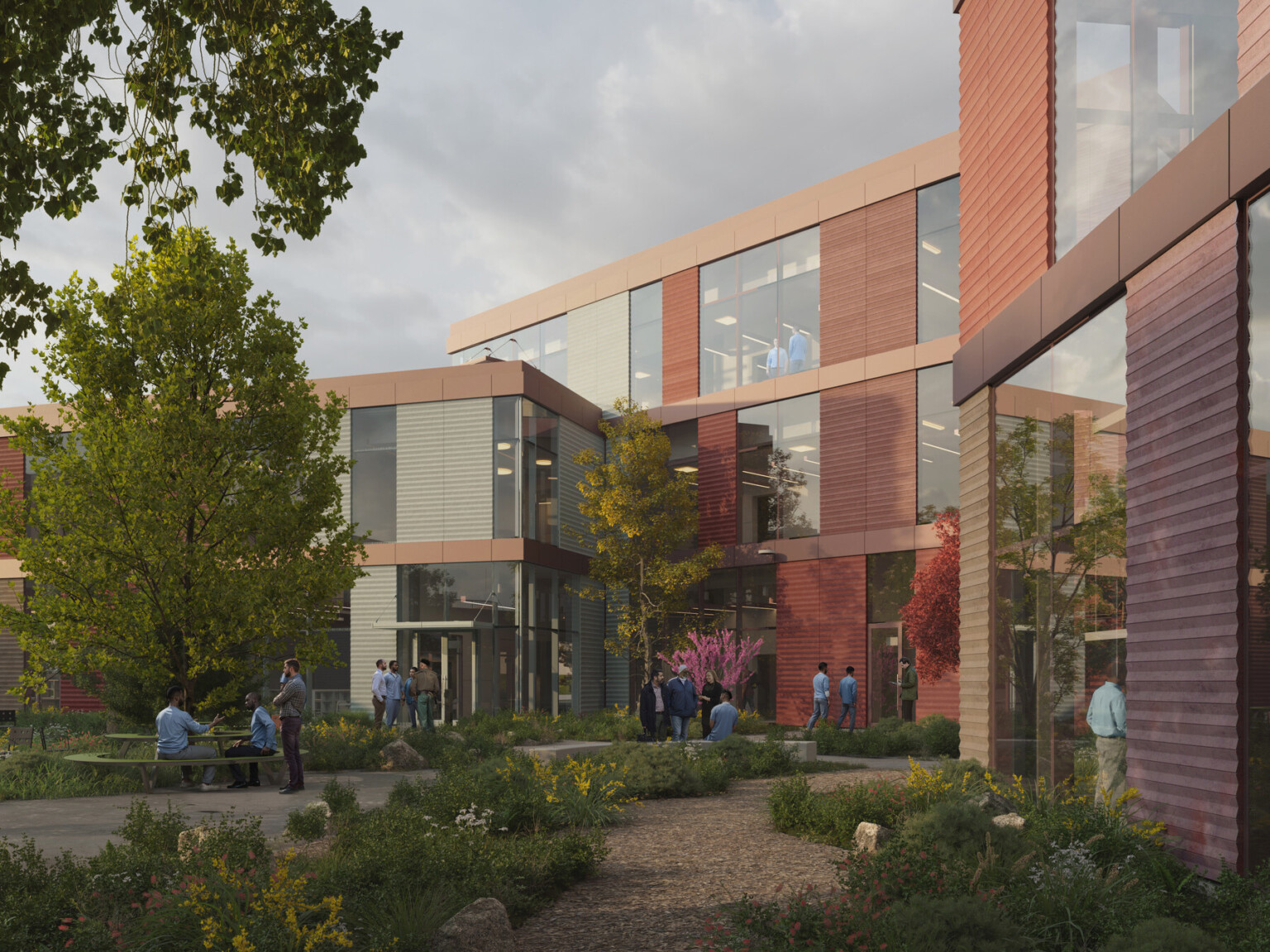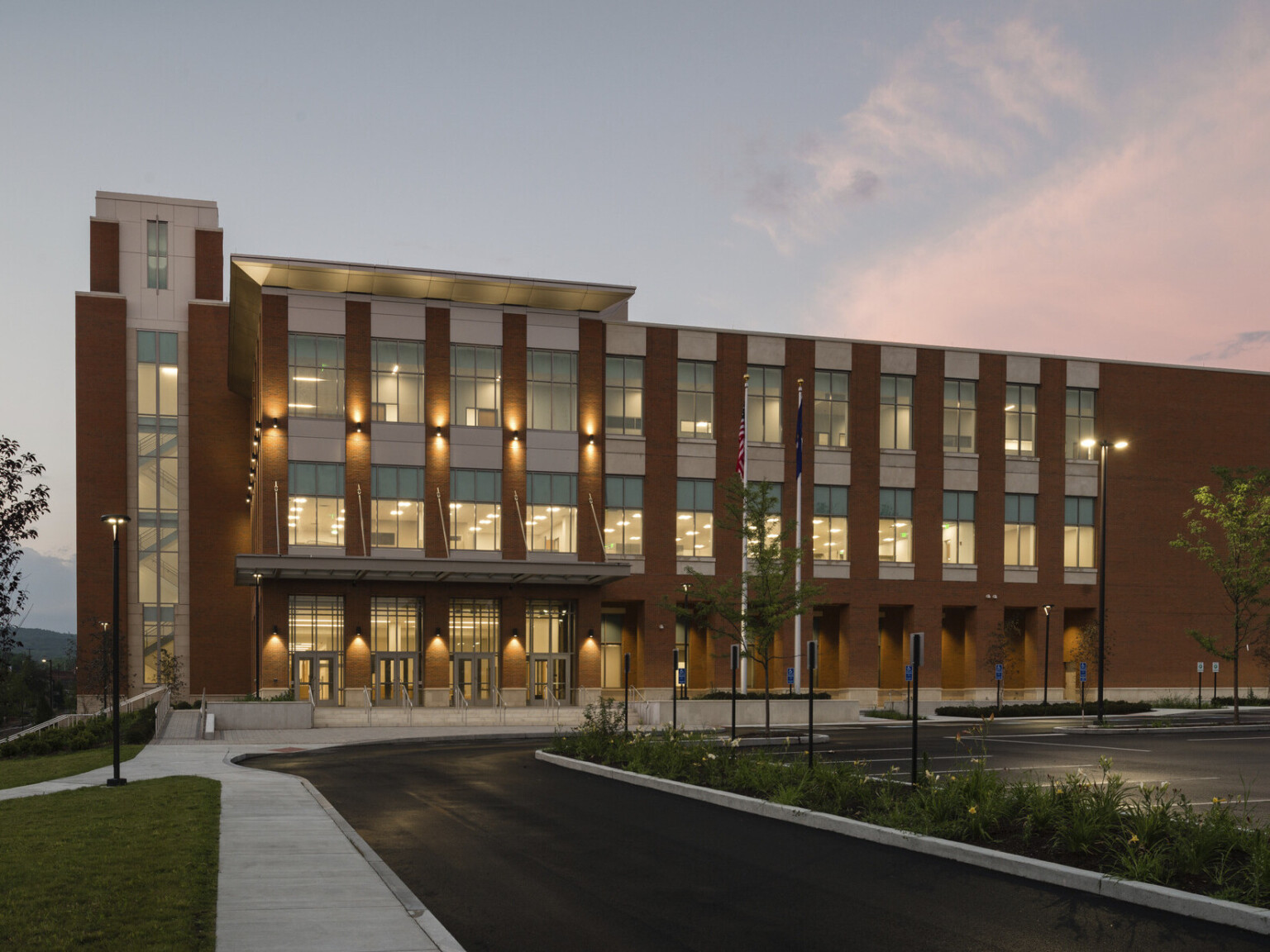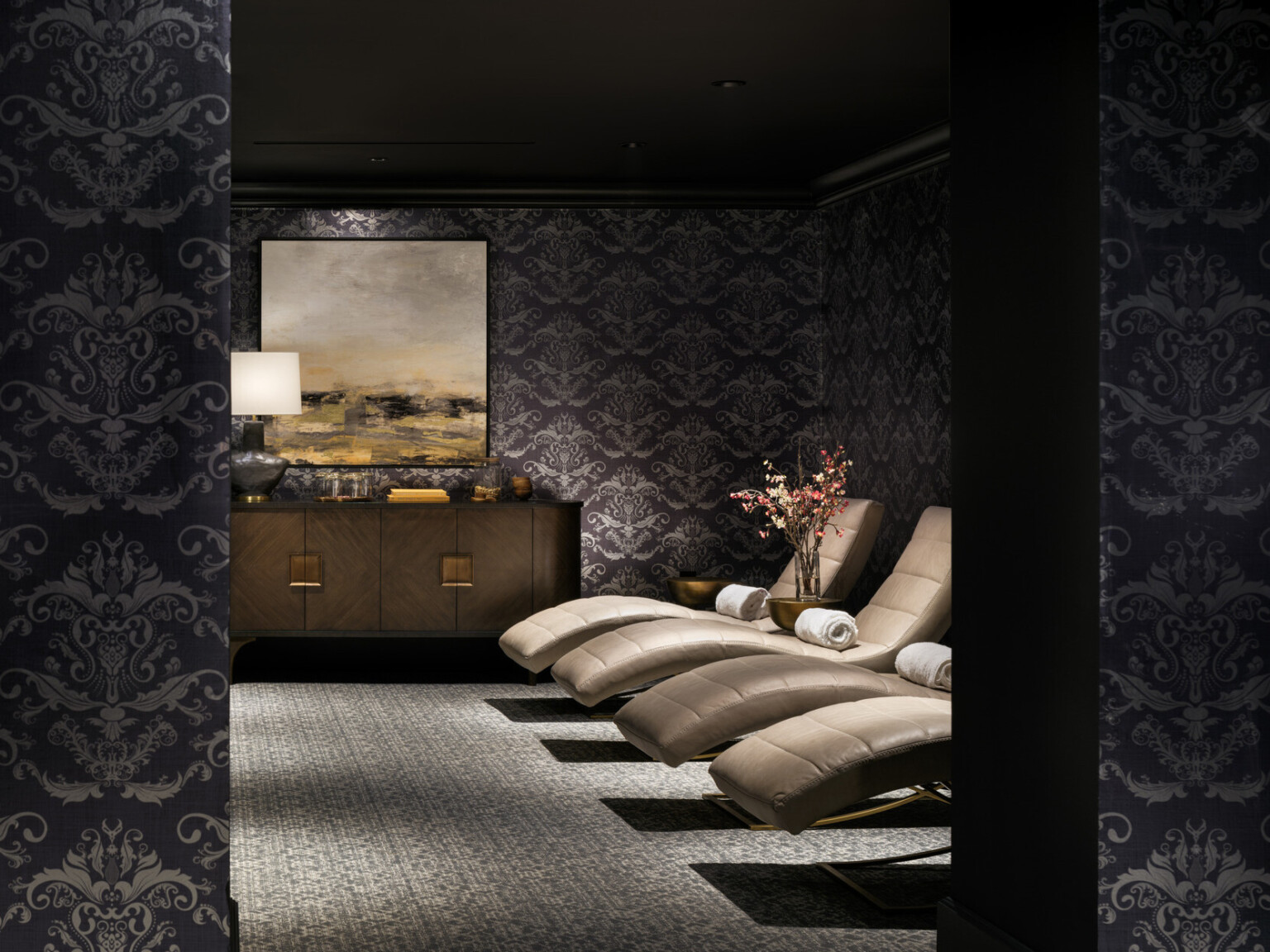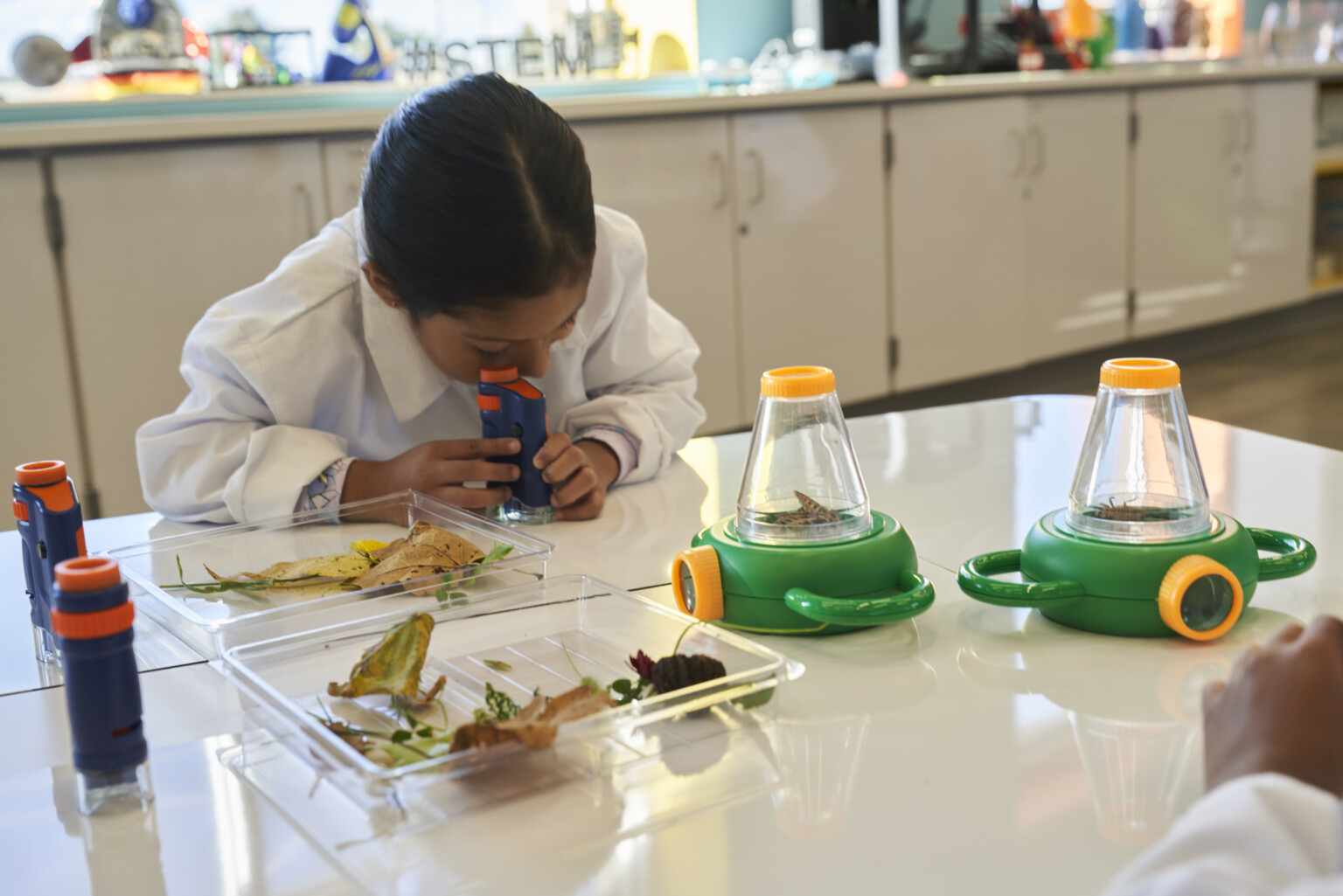
Inquiry and Wonder Supported Through the Built Environment
Inquiry-Based Learning Cycle
At its core, the model for inquiry-based learning is student-centered and student-driven. It allows each individual student to encounter the inquiry cycle, engaging real-world problem solving to pilot their journey to realization.
This inquiry cycle – wonder, design, discover, define, and reflect – allows for the agency of learning to flow between the educator and the learner. As students work through the phases in the inquiry cycle, they connect their real-world experiences and observations to answer questions and advance thoughts. Through this acquired knowledge and discovery, students gain an understanding of their passion and interests, and how they learn best.
We see students experience this at every level of education. At Storm Lake Early Elementary School, learners as young as four years old are experiencing moments of inquiry. Specially designed STEM spaces allow students to see themselves as scientists, or doctors, or anything else they can imagine. The curriculum and the space they’re learning in cultivates this cycle of inquiry and how they see the world, which may be completely unique to how their peers view it.
Space Supports Inquiry-Based Learning
As designers, our job is to create learning environments that promote these moments of deep learning, high levels of engagement, and increased student agency. The priority for these spaces is to support the student and foster greater student outcomes. For students to successfully experience the inquiry-based learning cycle, the environment must be flexible and adaptable. It should be filled with a variety of furniture and designated spaces to enable choice and allow students to explore how they best draw conclusions from their experiences.
Our work at James L. Capps Middle School highlights how space supports inquiry. The school is separated into neighborhoods, each with its own unique design and furniture. Operable partitions, scaled collaborative areas, and flexible furniture create multi-modal environments for learning. Transparency is a key design attribute throughout, which allows learning to constantly be on display. Assorted science and maker spaces occupy the heart of each learning neighborhood, with a large CoLab for 75 students, a maker lab, and a formal science lab. This variety of classrooms and learning spaces allow for the students at Capps to truly take ownership of their environment.
In addition, students need to feel safe, both physically as well as emotionally. We design learning spaces that adapt to the unique needs of each student and enable teachers and students to feel connected and inclusive to their peers; creating a place and a culture where students feel safe to authentically express themselves.
Each school is unique. There is no one-size-fits-all for designing adaptive learning spaces. That’s why we use the BOLD™ — Bridging Organization, Leadership, and Design — process to connect educators, designers, and students to push traditional models of learning into future-ready learning environments.
BOLD
Moving away from traditional modes of teaching and learning can be challenging and intimidating. Change can be difficult. BOLD allows our educators and designers to collaborate with our partners every step of the way in a process that’s tailored to individual school standards.
We start by discovering where change is needed, followed by conducting visioning sessions to identify what the ideal student experience looks like. Working alongside educators, school vision statements are created to guide our design teams and inform them of how the built environment will meet the standards and expectations of this vision.
Our team supports the creation of cultural and academic expectations to assist in determining the policies, procedures, and systems development for the learning space. Once all of this is in place, the BOLD process really takes shape as we work with educators to adapt to their new environment and to understand how they can effectively use the space to create the envisioned outcomes for their students.
Our BOLD team leaders work with educators to build skills and motivation to adapt to new strategies and teaching tools. This change management piece of the BOLD process is transformational and allows teachers to embrace this reimagined space, giving them the confidence they need for sustainable and impactful change.
When we give students the power to take ownership of their learning, we allow their own experiences and wonder drive them to knowledge and understanding. Just as important as giving them this autonomy is providing them with the appropriate learning environment to experience these moments of inquiry. Are you ready to see what this might look like in your school or how the BOLD team can push your district forward and help design future-ready learning environments? Let’s connect!
Explore more from our K-12 Education team.
To receive ideas like this directly to your inbox, subscribe to our email list.
